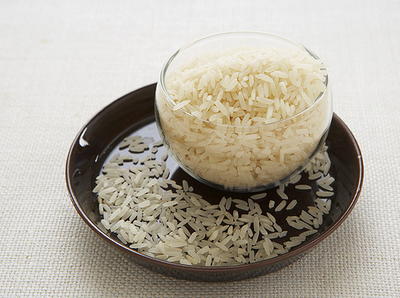
This image courtesy of Joseph DeLeo
If there is any one food that for us symbolizes the regional cuisines of Southeast Asia, it is sticky rice. It is the staple food, the staff of life, in Laos, northern Thailand, and northeast Thailand. It is also widely eaten in Cambodia, Vietnam, Yunnan, and other parts of Thailand, and it is often used for making sweets and ceremonial foods.
Sticky rice is medium to long grain and opaque white before cooking. It is a different variety of rice from jasmine, “sticky” when cooked because it contains a different form of starch (it is very low in amylose and is high in amylopectin). It is sometimes called sweet rice or glutinous rice. Sticky rice from Thailand is often sold marked pin kao, or with the Vietnamese term for sticky rice, gao nep.
Sticky rice is fun, liberating food. No utensils are needed. When it comes to eating sticky rice for the first time, children are usually better than adults; they have no problem eating with their fingers. For us, sticky rice is a way of eating, a way of organizing meals. To eat it, take a large ball of rice in one hand, then pull a smaller bite-sized piece off with your other hand and squeeze it gently into a firm clump. Then it’s almost like a piece of bread: Use it to scoop up some salsa or a piece of grilled chicken.
To prepare sticky rice, you must first soak it overnight in cold water. It is then steam-cooked in a basket or steamer over a pot of boiling water. The long soaking gives the rice more flavor, but you can take a short-cut and soak it in warm water for just 2 hours.
People tend to eat a lot of sticky rice, or at least we do, and so do our friends, so we cook 3 cups for 4 to 6 hungry adults.
Dietary ConsiderationVegetarian
Five Ingredients or LessYes
